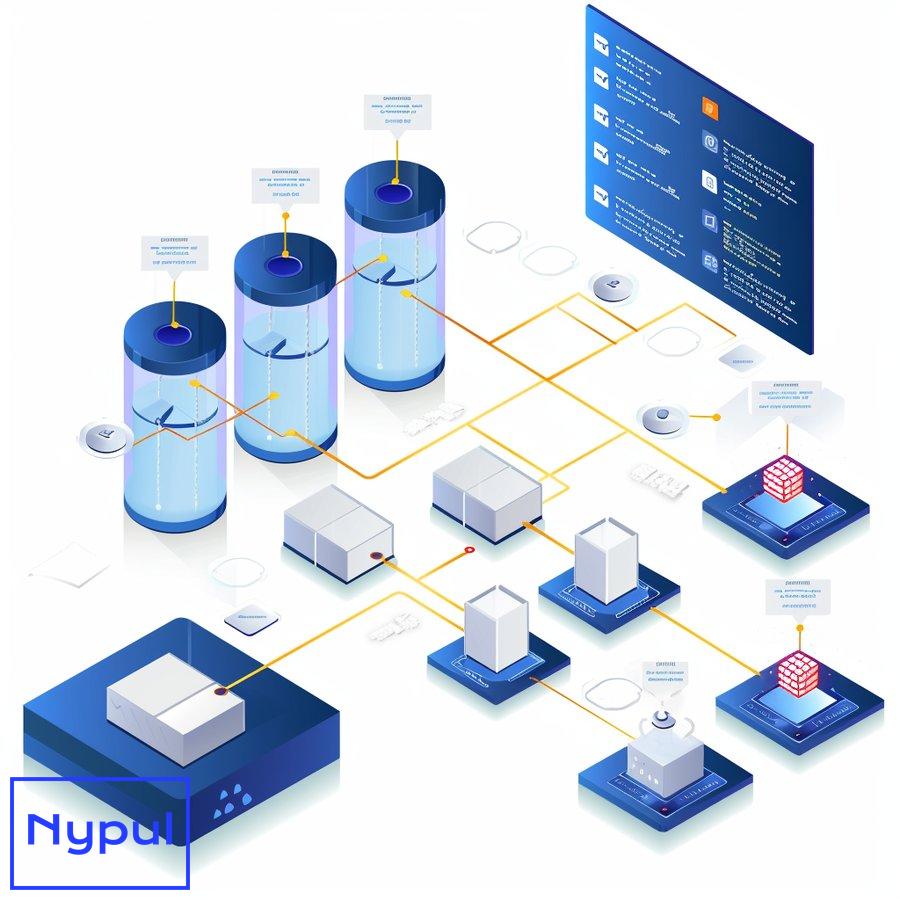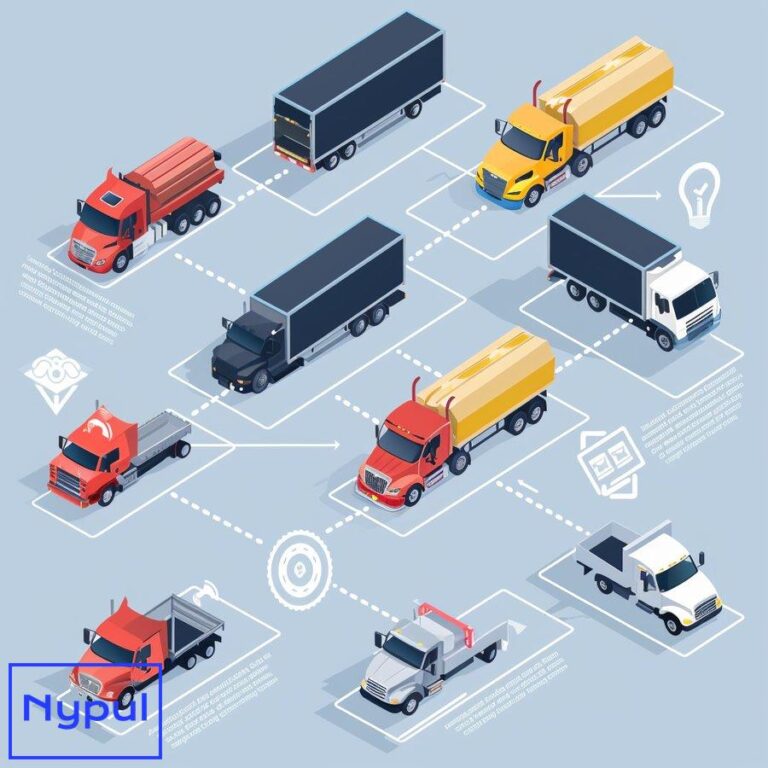What Is the DTSC Empty Container Rule
The California Department of Toxic Substances Control (DTSC) Empty Container Rule is a crucial regulation that governs the management of containers that previously held hazardous materials or hazardous waste. This rule is designed to ensure proper handling, disposal, and recycling of these containers while minimizing environmental and health risks.
The DTSC Empty Container Rule is codified in the California Code of Regulations, Title 22, Section 66261.7. It provides specific guidelines for determining when a container is considered “empty” and how to manage different types of empty containers. The rule applies to businesses, industries, and organizations that handle hazardous materials or generate hazardous waste in California.
Key aspects of the DTSC Empty Container Rule include:
Definition of “empty”: The rule establishes criteria for when a container is considered empty based on the type of material it held and its physical characteristics.
Management requirements: It outlines proper procedures for handling, storing, and disposing of empty containers.
Documentation: The rule specifies record-keeping requirements related to empty container management.
Compliance obligations: It sets forth the responsibilities of generators, transporters, and facilities handling empty containers.
Understanding and complying with the DTSC Empty Container Rule is essential for businesses operating in California to avoid violations, penalties, and potential environmental harm. The rule aims to strike a balance between facilitating the reuse and recycling of containers and ensuring that residual hazardous materials are properly managed.
How does the DTSC define an “empty” container?
The DTSC’s definition of an “empty” container is critical for determining how a container should be managed under the Empty Container Rule. The definition varies depending on the type of material the container previously held and its physical characteristics.
Containers that held pourable hazardous materials:
A container that previously held a pourable hazardous material is considered empty when:
- All contents have been removed using practices commonly employed to remove materials from that type of container (e.g., pouring, pumping, aspirating).
- No more than one inch of residue remains on the bottom of the container.
- No more than 3% by weight of the total capacity of the container remains for containers less than or equal to 119 gallons in size.
- No more than 0.3% by weight of the total capacity of the container remains for containers greater than 119 gallons in size.
Containers that held non-pourable hazardous materials:
For containers that previously held non-pourable hazardous materials (such as solids, greases, or thick resins), the DTSC considers them empty when:
- All contents have been removed that can be removed using practices commonly employed to remove materials from that type of container (e.g., scooping, chipping, or scraping).
- No hazardous material remains that can feasibly be removed by physical methods.
Containers that held acute or extremely hazardous waste:
Containers that previously held acute hazardous waste (P-listed waste) or extremely hazardous waste are subject to more stringent requirements. These containers are considered empty only when:
- The container has been triple rinsed using a solvent capable of removing the hazardous material.
- The container has been cleaned by another method proven to achieve equivalent removal.
- The inner liner that prevented contact of the hazardous material with the container has been removed.
Special considerations for specific container types:
Aerosol Containers: An aerosol container is considered empty when the contents and propellant have been dispensed to the maximum extent practical under normal use, and the spray mechanism is still in place.
Compressed Gas Cylinders: A compressed gas cylinder is considered empty when the pressure inside the container approaches atmospheric pressure.
Table: Summary of DTSC Empty Container Definitions
| Container Type | Definition of “Empty” |
|---|---|
| Pourable Hazardous Materials (≤119 gallons) | – All contents removed – ≤1 inch residue – ≤3% by weight of capacity remains |
| Pourable Hazardous Materials (>119 gallons) | – All contents removed – ≤1 inch residue – ≤0.3% by weight of capacity remains |
| Non-Pourable Hazardous Materials | – All removable contents removed – No feasibly removable material remains |
| Acute/Extremely Hazardous Waste | – Triple rinsed or equivalent – Inner liner removed (if applicable) |
| Aerosol Containers | – Contents and propellant dispensed to maximum extent – Spray mechanism intact |
| Compressed Gas Cylinders | – Pressure approaches atmospheric pressure |
Understanding these definitions is crucial for proper compliance with the DTSC Empty Container Rule. Businesses must carefully assess each container based on these criteria to determine if it meets the “empty” definition before deciding on appropriate management methods.
What are the compliance requirements for the Empty Container Rule?
Compliance with the DTSC Empty Container Rule involves several key requirements that businesses must follow to ensure proper management of containers that previously held hazardous materials or hazardous waste. These requirements are designed to protect human health and the environment while promoting responsible container handling practices.
Proper emptying procedures:
Businesses must ensure that containers are emptied according to the DTSC’s definition of “empty” for the specific type of container and material it held. This may involve:
- Pouring out all pourable contents
- Scraping or scooping out non-pourable contents
- Triple rinsing containers that held acute or extremely hazardous waste
Labeling requirements:
Empty containers must be properly labeled to indicate their status:
- Containers larger than 5 gallons must be marked with the word “Empty”
- The date the container was emptied must be clearly marked on containers larger than 5 gallons
Storage limitations:
Empty containers are subject to storage time limits:
- Containers larger than 5 gallons must be managed (i.e., disposed of, recycled, or sent for reconditioning) within one year of being emptied
- There is no specific time limit for containers 5 gallons or smaller, but they should be managed in a timely manner
Management options:
Businesses must choose appropriate management options for empty containers based on their size and previous contents:
- Containers 5 gallons or smaller may be disposed of in regular trash if they meet the “empty” definition
- Containers larger than 5 gallons must be:
- Sent to a drum reconditioner
- Sent to a legitimate recycling facility
- Returned to the original supplier for refilling
- Sent to a permitted hazardous waste facility if not “empty”
Record-keeping:
Proper documentation is essential for compliance:
- Maintain records of container emptying dates, management methods, and disposal or recycling information
- Keep records for at least three years
Training:
Employees involved in handling empty containers must receive appropriate training:
- Training should cover proper emptying procedures, labeling requirements, and management options
- Training records must be maintained
Inspection and maintenance:
Regular inspections of empty container storage areas are required:
- Check for proper labeling, container integrity, and compliance with storage time limits
- Address any issues promptly to maintain compliance
Hazardous waste determination:
Businesses must properly determine if residues or rinse water generated from emptying containers are hazardous waste:
- Conduct waste determinations on residues and rinse water
- Manage any hazardous waste residues or rinse water according to applicable regulations
Transportation compliance:
When transporting empty containers:
- Ensure compliance with Department of Transportation (DOT) regulations for shipping empty containers
- Use appropriate shipping papers or bills of lading
Facility-specific requirements:
Businesses with hazardous waste permits or tiered permits may have additional requirements:
- Review facility permits for any specific empty container management conditions
- Incorporate empty container management procedures into the facility’s hazardous waste management plan
By adhering to these compliance requirements, businesses can ensure they are properly managing empty containers in accordance with the DTSC Empty Container Rule. This not only helps avoid potential violations and penalties but also contributes to responsible environmental stewardship and workplace safety.
How should businesses properly empty hazardous waste containers?
Properly emptying hazardous waste containers is a critical step in complying with the DTSC Empty Container Rule. The method for emptying containers depends on the type of material they contained and the container’s characteristics. Following the correct procedures ensures that containers meet the “empty” definition and can be managed appropriately.
General emptying procedures:
Pourable materials:
- Pour out all liquid contents
- Use pumps or aspirators for viscous liquids
- Tilt and drain containers to remove as much material as possible
- Allow sufficient time for materials to drain completely
Non-pourable materials:
- Scrape out solids, sludges, and semi-solids
- Use appropriate tools such as spatulas or scrapers
- Remove as much material as feasibly possible
Specific emptying methods for different container types:
Drums and other large containers:
- Use drum pumps or vacuum systems for liquids
- For solids, use drum vacuums or manual scooping
- Ensure proper personal protective equipment (PPE) is worn
Small containers (5 gallons or less):
- Pour out contents carefully
- Use funnels to minimize spills
- Scrape out non-pourable materials
Bags and sacks:
- Empty contents completely
- Turn bags inside out if possible
- Shake to remove residual materials
Aerosol cans:
- Spray until no more product comes out
- Ensure propellant is fully discharged
Compressed gas cylinders:
- Release remaining gas safely in a well-ventilated area
- Follow specific procedures for different gas types
Emptying acute or extremely hazardous waste containers:
- Triple rinse containers with an appropriate solvent
- Collect and manage rinsate as hazardous waste
- Document the triple rinsing process
Safety considerations during emptying:
Personal protective equipment (PPE):
- Wear appropriate PPE based on the material’s hazards
- This may include gloves, goggles, respirators, and protective clothing
Ventilation:
- Empty containers in well-ventilated areas
- Use local exhaust ventilation for volatile materials
Spill prevention and response:
- Conduct emptying operations in designated areas with spill containment
- Have spill response materials readily available
Incompatible materials:
- Avoid mixing incompatible residues during the emptying process
- Clean equipment between emptying different material types
Best practices for efficient and compliant emptying:
Training:
- Provide thorough training to employees on proper emptying procedures
- Include hands-on demonstrations for different container types
Standard operating procedures (SOPs):
- Develop written SOPs for emptying different types of containers
- Include safety precautions and required PPE in the SOPs
Equipment maintenance:
- Regularly inspect and maintain equipment used for emptying containers
- Clean equipment thoroughly between uses
Documentation:
- Keep records of emptying procedures, including dates and methods used
- Document any issues encountered during the emptying process
Waste minimization:
- Implement practices to minimize residual waste in containers
- Consider using container liners for difficult-to-empty materials
Regular audits:
- Conduct periodic audits of emptying procedures to ensure compliance
- Address any identified issues promptly
By following these proper emptying procedures, businesses can ensure that their hazardous waste containers meet the DTSC’s definition of “empty” and can be managed in compliance with the Empty Container Rule. This not only helps maintain regulatory compliance but also promotes workplace safety and environmental protection.
What are the management options for different types of empty containers?
The DTSC Empty Container Rule provides several management options for empty containers, depending on their size, previous contents, and condition. Proper management ensures compliance with regulations and promotes environmentally responsible practices. Here are the management options for different types of empty containers:
Containers 5 gallons or smaller:
Disposal in regular trash:
- Can be disposed of in regular solid waste if they meet the “empty” definition
- Remove or deface labels indicating hazardous contents
- Ensure containers are not capable of holding liquids (puncture or crush if necessary)
Recycling:
- Metal containers can often be recycled with scrap metal
- Plastic containers may be recyclable depending on local recycling programs
- Remove or deface hazardous material labels before recycling
Reuse:
- May be reused for the same or compatible materials
- Ensure proper labeling if reused for hazardous materials
Containers larger than 5 gallons:
Drum reconditioning:
- Send to a permitted drum reconditioner
- Reconditioners clean and refurbish drums for reuse
- Obtain documentation of proper reconditioning
Scrap metal recycling:
- Metal drums can be sent to scrap metal recyclers
- Ensure drums are properly emptied and labels are removed or defaced
- Obtain documentation of recycling
Return to supplier:
- Many suppliers offer drum return programs
- Typically applies to drums in good condition
- Follow supplier’s requirements for return shipments
Legitimate recycling facility:
- Send to facilities that recycle the container material
- Ensure the facility is properly permitted for recycling
- Obtain documentation of recycling
Hazardous waste disposal:
- If a container cannot be emptied to meet the “empty” definition, it must be managed as hazardous waste
- Send to a permitted hazardous waste treatment, storage, and disposal facility (TSDF)
- Use a hazardous waste manifest for shipment
Special container types:
Aerosol cans:
- Recycle empty aerosol cans if local programs accept them
- Puncture and drain cans using specialized equipment before recycling
- Manage contents as hazardous waste if applicable
Compressed gas cylinders:
- Return to supplier for refilling when possible
- Send to specialized recyclers for metal recovery
- Ensure valves are removed before recycling
Containers that held acute or extremely hazardous waste:
- Must be triple rinsed before considering any management options
- Manage rinsate as hazardous waste
- After triple rinsing, manage as described for other container types
Table: Management Options for Empty Containers
| Container Type | Size | Management Options |
|---|---|---|
| All Types | ≤ 5 gallons | – Regular trash disposal – Recycling – Reuse |
| All Types | > 5 gallons | – Drum reconditioning – Scrap metal recycling – Return to supplier – Legitimate recycling facility – Hazardous waste disposal (if not “empty”) |
| Aerosol Cans | Any | – Recycling (if accepted locally) – Puncture and drain before recycling |
| Compressed Gas Cylinders | Any | – Return to supplier – Specialized recycling |
| Acute/Extremely Hazardous Waste Containers | Any | – Triple rinse before management – Manage rinsate as hazardous waste – Then manage as other container types |
Best practices for container management:
Segregation:
- Segregate empty containers by size, material, and previous contents
- Store empty containers separately from those still in use or containing hazardous waste
Labeling:
- Clearly label containers as “Empty” and mark with the date emptied
- Remove or deface original hazardous material labels
Storage:
- Store empty containers in a designated area
- Protect from weather and potential damage
- Implement proper security measures to prevent unauthorized access
Transportation:
- Ensure compliance with Department of Transportation (DOT) regulations when shipping empty containers
- Use appropriate shipping papers or bills of lading
Record-keeping:
- Maintain documentation of container management, including:
- Dates of emptying
- Management method chosen
- Receipts or certificates from recyclers or reconditioners
Regular inspections:
- Conduct periodic inspections of empty container storage areas
- Check for proper labeling, container integrity, and compliance with storage time limits
By carefully considering these management options and implementing best practices, businesses can ensure compliance with the DTSC Empty Container Rule while promoting environmental responsibility and resource conservation. Proper management of empty containers not only helps avoid regulatory violations but also contributes to a company’s overall waste reduction and sustainability efforts.
How long can empty containers be stored before disposal or recycling?
The DTSC Empty Container Rule sets specific time limits for storing empty containers, which vary depending on the container size. Adhering to these storage time limits is crucial for maintaining compliance and preventing the accumulation of unnecessary materials on-site.
Storage time limits:
Containers 5 gallons or smaller:
-
No specific time limit is set by the DTSC for storing empty containers of 5Containers 5 gallons or smaller:
-
No specific time limit is set by the DTSC for storing empty containers of 5 gallons or smaller. However, it is advisable to manage these containers in a timely manner to ensure compliance and reduce potential risks associated with long-term storage.
Containers larger than 5 gallons:
- For containers larger than 5 gallons, the DTSC requires that they be managed (disposed of, recycled, or sent for reconditioning) within one year of being emptied. This time limit is crucial for preventing the accumulation of hazardous materials and ensuring that containers do not become a liability.
Best practices for managing storage time:
Regular audits:
- Conduct regular audits of empty container storage areas to ensure compliance with time limits.
- Identify containers approaching the one-year mark and take appropriate action.
Documentation:
- Maintain accurate records of the dates when containers were emptied.
- Document management actions taken for containers nearing their storage time limit.
Proactive management:
- Develop a proactive management plan for empty containers to ensure they are processed before reaching the time limit.
- Establish a routine schedule for reviewing and managing empty containers.
Employee training:
- Train employees on the importance of adhering to storage time limits.
- Provide guidance on how to identify and manage containers approaching their time limits.
By understanding and adhering to the storage time limits set by the DTSC, businesses can ensure compliance with the Empty Container Rule while minimizing risks associated with hazardous materials.
What documentation is required for empty container management?
Proper documentation is essential for ensuring compliance with the DTSC Empty Container Rule. Businesses must maintain accurate records of their empty container management practices to demonstrate adherence to regulatory requirements and facilitate inspections.
Key documentation requirements:
Emptying records:
- Maintain records of the dates when containers were emptied.
- Document the methods used to empty each container, including any rinsing procedures.
Management method documentation:
- Keep records of how each empty container was managed, including:
- Disposal methods (e.g., regular trash, recycling)
- Reconditioning or recycling facility details
- Any returns to suppliers
Training records:
- Document employee training on empty container management procedures.
- Include records of training sessions, materials used, and employee attendance.
Inspection records:
- Conduct regular inspections of empty container storage areas and maintain records of findings.
- Document any corrective actions taken to address compliance issues.
Waste determinations:
- Keep records of waste determinations for residues or rinse water generated during the emptying process.
- Document any hazardous waste determinations made for residual materials.
Transportation documentation:
- Maintain shipping papers or bills of lading for any empty containers transported off-site.
- Ensure documentation reflects compliance with Department of Transportation (DOT) regulations.
Retention of records:
- Retain all documentation related to empty container management for a minimum of three years.
- Ensure records are readily accessible for inspections by regulatory agencies.
Best practices for documentation:
Organized record-keeping:
- Implement an organized record-keeping system for easy access to documentation.
- Use digital tools or software to streamline record management.
Regular reviews:
- Conduct regular reviews of documentation to ensure accuracy and completeness.
- Update records promptly as management actions are taken.
Training on documentation practices:
- Train employees on the importance of accurate documentation and compliance.
- Provide guidance on how to properly document empty container management activities.
By maintaining comprehensive documentation, businesses can demonstrate compliance with the DTSC Empty Container Rule and facilitate effective management of empty containers. Proper documentation not only helps avoid regulatory violations but also supports responsible environmental practices.
How does the Empty Container Rule apply to aerosol cans and compressed gas cylinders?
The DTSC Empty Container Rule has specific provisions for managing aerosol cans and compressed gas cylinders due to their unique characteristics and potential hazards. Understanding these provisions is essential for businesses that handle these types of containers.
Aerosol cans:
Definition of “empty”:
- An aerosol can is considered empty when the contents and propellant have been dispensed to the maximum extent practical under normal use, and the spray mechanism is still in place.
Management options:
-
Recycling: Empty aerosol cans can often be recycled if local recycling programs accept them. Before recycling, ensure that the cans are punctured and drained using specialized equipment designed for aerosol cans.
-
Hazardous waste management: If aerosol cans still contain hazardous materials or cannot be emptied to meet the “empty” definition, they must be managed as hazardous waste. This includes following proper disposal procedures and using a hazardous waste manifest for shipment.
Safety considerations:
-
Puncturing cans: When puncturing aerosol cans, use appropriate equipment to prevent accidental release of contents and to ensure safety. Conduct this process in a well-ventilated area and wear appropriate personal protective equipment (PPE).
-
Storage: Store empty aerosol cans in a designated area away from heat sources and incompatible materials. Ensure proper labeling to indicate that they are empty.
Compressed gas cylinders:
Definition of “empty”:
- A compressed gas cylinder is considered empty when the pressure inside the container approaches atmospheric pressure. This means that the cylinder is no longer capable of holding significant amounts of gas.
Management options:
-
Return to supplier: Many suppliers offer programs for returning empty compressed gas cylinders for refilling. This is often the preferred option as it promotes reuse and minimizes waste.
-
Recycling: If returning the cylinder is not feasible, it can be sent to specialized recyclers that recover metals. Ensure that valves are removed before recycling.
-
Hazardous waste management: If the cylinder still contains hazardous materials or cannot be emptied to meet the “empty” definition, it must be managed as hazardous waste. Follow proper disposal procedures and use a hazardous waste manifest for shipment.
Safety considerations:
-
Pressure relief: Before transporting or recycling compressed gas cylinders, ensure that the pressure has been safely relieved. Follow proper procedures for venting gas in a controlled manner.
-
Storage: Store empty compressed gas cylinders upright and secured to prevent tipping. Keep them in a designated area away from heat sources and incompatible materials.
Best practices for managing aerosol cans and compressed gas cylinders:
Employee training:
- Provide training to employees on the specific handling and management procedures for aerosol cans and compressed gas cylinders.
Regular inspections:
- Conduct regular inspections of storage areas for aerosol cans and compressed gas cylinders to ensure compliance with safety and regulatory requirements.
Documentation:
- Maintain records of emptying procedures, management methods, and any hazardous waste determinations made for aerosol cans and compressed gas cylinders.
By understanding and complying with the specific provisions of the DTSC Empty Container Rule for aerosol cans and compressed gas cylinders, businesses can effectively manage these containers while minimizing risks to human health and the environment.
What are common violations of the Empty Container Rule?
Compliance with the DTSC Empty Container Rule is essential for businesses that handle hazardous materials. However, several common violations can occur, often due to misunderstandings of the regulations or inadequate management practices. Identifying these violations can help businesses take proactive measures to avoid them.
Common violations:
Improper emptying procedures:
- Failing to properly empty containers according to the DTSC’s definition of “empty” is a frequent violation. This includes not removing all residues or not using appropriate methods for specific container types.
Inadequate labeling:
- Empty containers must be clearly labeled as “Empty.” Businesses often neglect to label containers appropriately or fail to mark the date they were emptied, leading to compliance issues.
Storage time violations:
- Not adhering to the one-year storage limit for containers larger than 5 gallons is a common violation. Businesses may overlook the need to manage these containers within the specified timeframe.
Failure to document:
- Inadequate record-keeping related to empty container management can result in violations. Businesses must maintain accurate documentation of emptying procedures, management methods, and employee training records.
Improper management of hazardous waste:
- Failing to properly manage residues or rinse water generated during the emptying process can lead to violations. Businesses must conduct waste determinations and manage any hazardous materials accordingly.
Transport violations:
- Non-compliance with Department of Transportation (DOT) regulations when transporting empty containers can result in violations. This includes improper shipping papers or failure to follow safety protocols.
Neglecting training requirements:
- Employees must be adequately trained on empty container management procedures. Failing to provide training or maintain training records can lead to compliance issues.
Inadequate inspections:
- Regular inspections of empty container storage areas are required. Businesses may violate the rule by not conducting inspections or failing to address identified issues promptly.
Best practices for avoiding violations:
Employee training:
- Provide comprehensive training to employees on the DTSC Empty Container Rule, emptying procedures, labeling requirements, and management options.
Regular audits:
- Conduct regular audits of empty container management practices to identify potential violations before they occur.
Documentation:
- Maintain organized and accurate records of empty container management activities, including emptying procedures, management methods, and training records.
Proactive management:
- Implement a proactive approach to managing empty containers, including regular reviews of storage time limits and timely disposal or recycling.
Compliance checks:
- Perform periodic compliance checks to ensure adherence to the DTSC Empty Container Rule and address any issues promptly.
By understanding common violations and implementing best practices, businesses can ensure compliance with the DTSC Empty Container Rule, reduce the risk of penalties, and promote responsible management of hazardous materials.
Where can businesses find resources for DTSC Empty Container Rule compliance?
Businesses seeking to comply with the DTSC Empty Container Rule can access a variety of resources to aid their understanding and implementation of the regulations. These resources include official documents, guidance materials, training programs, and support from industry organizations.
Official resources:
DTSC website:
- The California Department of Toxic Substances Control (DTSC) website provides comprehensive information on the Empty Container Rule, including regulatory text, guidance documents, and FAQs.
California Code of Regulations:
- The relevant sections of the California Code of Regulations (CCR), Title 22, outline the specific requirements of the Empty Container Rule. Businesses can refer to these regulations for detailed compliance information.
Guidance documents:
- The DTSC publishes various guidance documents that provide practical advice on managing empty containers, including best practices and compliance checklists.
Training resources:
Webinars and workshops:
- The DTSC often hosts webinars and workshops on hazardous waste management topics, including the Empty Container Rule. These events provide valuable training and networking opportunities.
Industry associations:
- Organizations such as the California Environmental Protection Agency (CalEPA) and the California Waste Management Association (CWMA) offer training programs and resources for businesses to enhance their understanding of hazardous waste regulations.
Consultants and experts:
- Businesses can seek assistance from environmental consultants or compliance experts who specialize in hazardous waste management. These professionals can provide tailored guidance and support for compliance efforts.
Online forums and communities:
- Engaging with online forums and communities focused on hazardous waste management can provide valuable insights and shared experiences from other businesses facing similar challenges.
Local resources:
County and city environmental agencies:
- Local environmental agencies often provide resources and support for businesses in their jurisdictions. These agencies can offer guidance on compliance with state and local regulations.
Networking opportunities:
- Participating in industry conferences and networking events can connect businesses with peers and experts who can share best practices and resources for compliance.
By utilizing these resources, businesses can enhance their understanding of the DTSC Empty Container Rule, implement effective management practices, and ensure compliance with hazardous waste regulations. Accessing the right information and support is essential for promoting responsible environmental stewardship and maintaining regulatory adherence.






